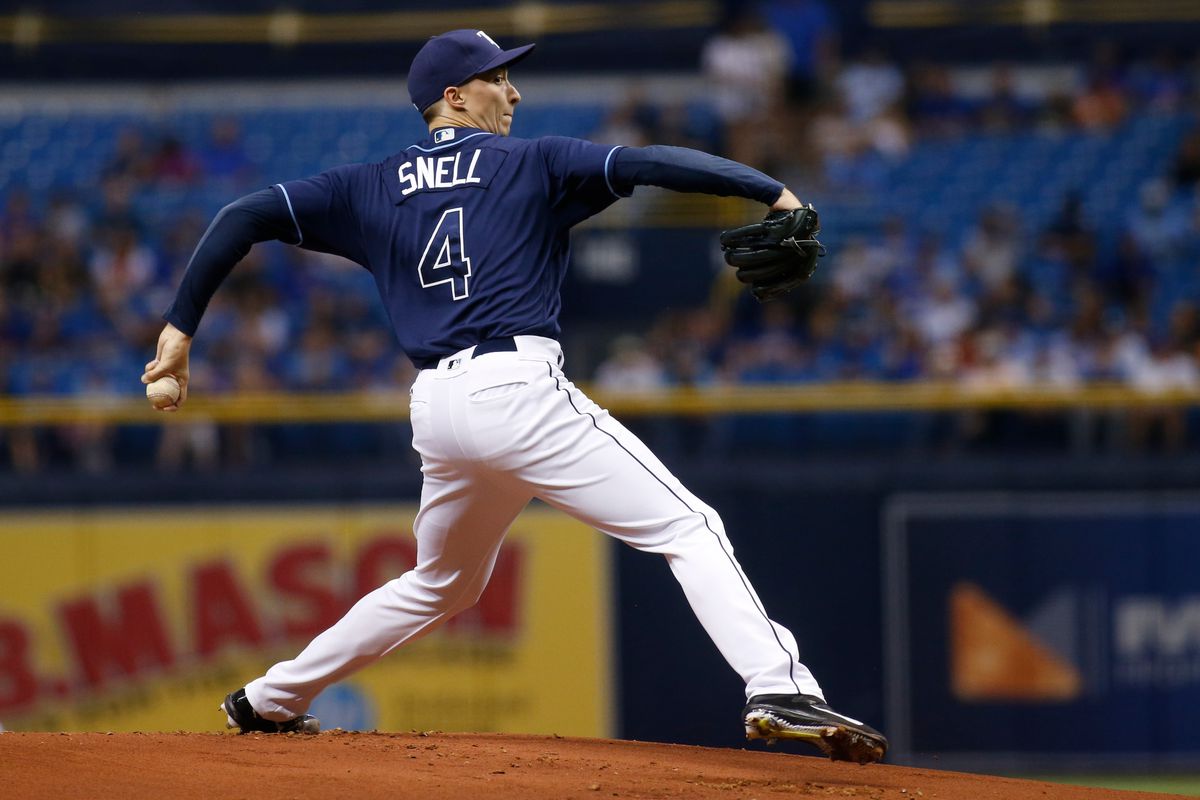Is Blake Snell an ‘Ace?’

On its face, this seems like a ridiculous question. Blake Snell has won a Cy Young Award and been an All Star. After a long road, he almost threw a no-hitter in the 2020 World Series. He has a career 3.24 ERA and 3.51 FIP. The Padres paid a king’s ransom of prospects to acquire him. With out a doubt, he is a very good pitcher who is at or close to the heights of his powers. However, that is not the question. The question is, is he an ace?
The first part of this question is determining what an “ace” is.
This is how MLB defines it:
“ “Ace” typically refers to a team’s No. 1 pitcher, though it can also be used to describe an elite pitcher in general. Therefore, a team with multiple elite pitchers is said to have more than one ace.”
By default MLB states that there are 30 “Aces” in the league. However, being an “Ace” on a bad team does not make you a good pitcher. It makes you the best the team has to offer. Apologies to Steven Brault of the Pirates, the pitcher with the best projections on his respective team, but there are some teams where he wouldn’t even make the Opening Day Roster, perhaps not even the AAA rotation for teams with deep farm systems.
I do not believe there are 30 “Aces” in MLB. It is rarified air reserved for those at the very top of the game. When “Ace” comes to mind, visions of Scherzer yelling obscenities and DeGrom burying 95 MPH sliders flash. Complete dominance, putting the team on their singular back.
I believe that the best way to quantify this is that there is an ace for each playoff team. This comes with the caveat that every playoff team does not have an “Ace”, but rather might just have a solid staff with a good bullpen and ridiculous lineup (Minnesota Twins). There are true “Aces” stuck on bad teams (Chris Sale), so it evens out.
Traditionally, 10 Teams make the playoffs outside of 2020’s wild 16 team playoff field. However, playoffs will most likely be expanded as MLB will never miss a chance to increase exposure and league revenue. They also hold the hope it will curtail tanking. But that’s another discussion.
So I’m going to give a little and estimate there will be 12 playoff teams. By my own definition there are 12 “Aces”.
Snell debuted in 2016 with a 3.54 ERA and 3.39 ERA so we’ll start there.
I’ve excluded K/9 and other more granular stats because it doesn’t matter how you get the outs to be an “Ace”, only that you get them consistently.
| 2016-2020 | IP | ERA | FIP | WAR |
| Blake Snell | 556 | 3.24 | 3.51 | 11.6 |
| League Rank 2016-2020 | 63rd | 9th | 15th | 29th |
By all accounts, Snell is a pitcher you want on your roster. His ERA and FIP support him.
However, the IP and WAR stick out noticeably. He has thrown the same amount of innings as Michael Wacha, who has alternated between being on the IL and being ineffective. This in turn affects his WAR, which is lower than the following pitchers: Rick Porcello, Lance Lynn, Jon Lester, Kenta Maeda, Jose Quintana, and James Paxton. Weird, but availability is as important as skill level. An “Ace” has to pitch when he’s needed and go deep into the game.
But can you be oft-injured and still be an “Ace”? Yes. And Snell has mostly avoided lengthy DL stints. He had a 10-Day Stint in 2018 when he won the Cy Young, and had multiple trips in 2019. But only ended up missing about 12 starts total.
So why the low IP totals? Snell simply does not work deep into games. He is notorious for running a high pitch count and that high pitch count factors into his overall effectiveness, especially 3 times through a line-up. Snell is very good, but only through 5, maybe 6 innings. In his career, Snell has 108 GS and 556 IP. His career average is 5.14 IP per start. Corey Kluber, in the same time period (2016-2020), has 102 GS and 670.1 IP. An average of 6.56 IP per start. A stark difference.
A strong bullpen is needed behind Snell for his value to the team to be fully actualized To consolidate his value crudely through WAR, 28 pitchers provided more value to their teams since 2016. 62 pitchers threw more innings. Are these pitcher’s “better” than him in a one game vacuum? Probably not, but a baseball season is 162 Games, and an “Ace” is supposed to lighten the load. Snell, for all his talent, puts an undeniable strain on a bullpen.
Until he begins to work deeper into games, Snell will be a very good pitcher, but one that requires a substantial support system in the bullpen. As of this writing, no, Blake Snell is not an “Ace”.
And this is most likely why the shallow-pocketed Rays traded Snell. His value was high after his playoff performance, coupled with the remaining cost controlled (3) years on his deal. Add in the fact that with Snell’s increasingly loud bemoaning of the Ray’s operating procedures (the Rays traded his boy Tommy Pham for some “slapdick”, his words not mine, prospects) and it isn’t hard to see why the Ray’s decided to trade him now.
The Rays did what they do best, flipping an overvalued or expensive (for them) asset for many cost-controlled assets with more years of control. Regardless of the budget constraints the Rays have self-imposed, it was probably a shrewd move.
















